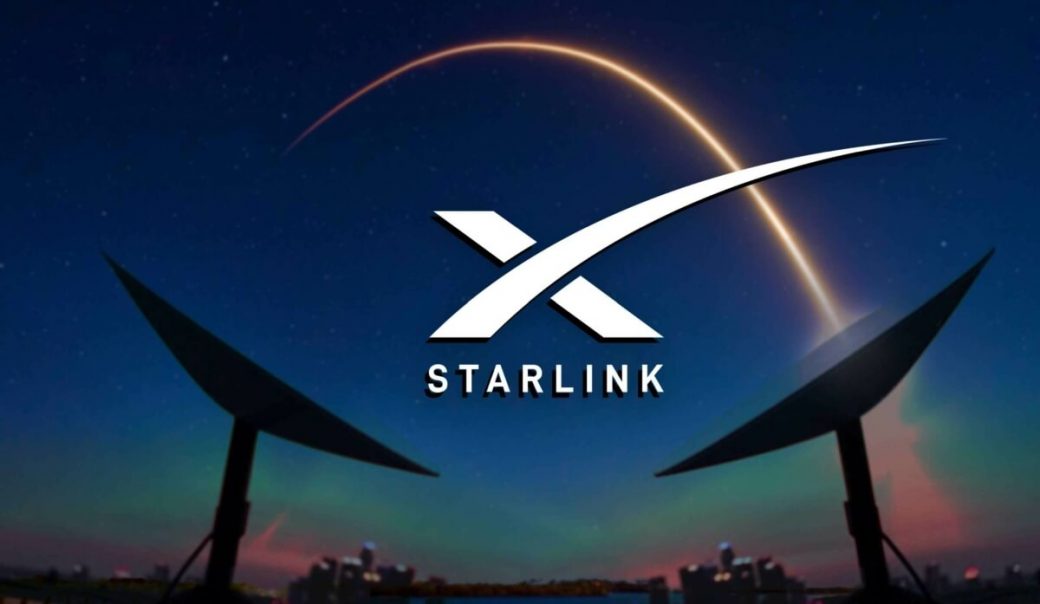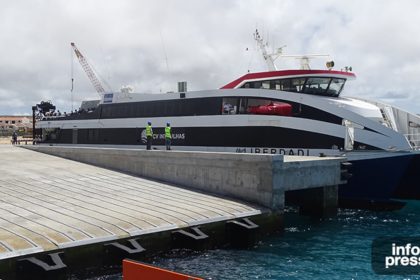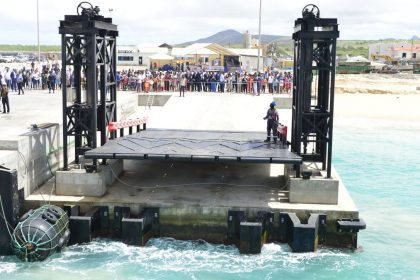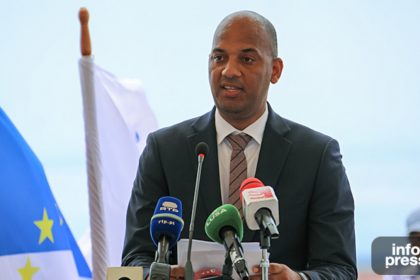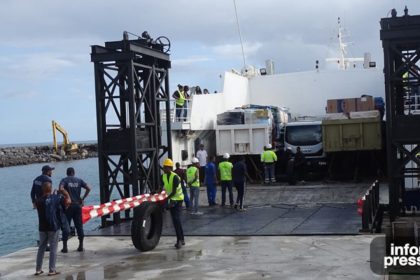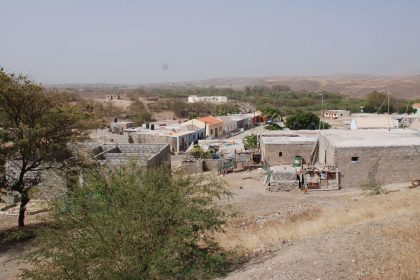In an effort to bring high-speed internet access to remote areas of Cape Verde, Starlink – the satellite broadband provider by SpaceX – has made a significant investment in the country. This move marks an important milestone for Starlink and paves the way for more widespread internet connectivity in Africa.
The new connections allow many communities that previously had limited or no access to fast and reliable broadband service, a chance at joining the digital age. Residents now have increased opportunities to collaborate online with family abroad, complete school assignments on time, and most importantly stay connected with friends around world—something that was virtually impossible before due to low speeds and frequent outages of traditional cable services.
Starlink’s direct link from space makes it possible for these remote areas of Cape Verde not only receive faster speed than their current connections but also enables them experience less latency (delay) when sending data across networks compared traditional cable services which are subject slowdowns caused by congestion or weather conditions like rain or snow storms.
With its investment in Cape Verde, StarLink hopes other African countries will soon follow suit as well as increasing global acceptance towards this revolutionary technology beyond just developed nations. It is committed towards making sure everyone has equal right over basic human amenities such as having easy access wider world via Internet regardless where they reside on globe.
Exploring the Environmental Impact of Starlink in Cape Verde
Residents of Cape Verde have expressed their concerns about the potential environmental impact of SpaceX’s Starlink project. On March 18th, 2021, SpaceX launched a batch of sixty Starlink satellites into orbit from Kennedy Space Center in Florida.
Starlink is an ambitious plan to launch up to 30,000 communications satellites into space by 2024. The goal is to provide low-cost internet access worldwide with minimal latency and interference for users on the ground. However, there are serious questions being raised about how these near-earth objects will affect our environment here on Earth—and especially in places like Cape Verde where they are often visible at night as bright moving points in the sky due to their proximity and altitude above sea level.
These small but powerful devices can cause light pollution which can affect human health and interfere with astronomy research efforts that rely heavily on clear skies for observation purposes; additionally it has been said that this type of technology could also increase levels or radiation exposure which may be hazardous over long periods time when exposed directly or indirectly through usage (which many people living outside urban areas do not have access too). Additionally there’s concern regarding possible disruption caused by increased radio frequencies used within communication networks as well as any potential damage done due unrealistic expectations created if services fail during peak times because current infrastructure isn’t able support such demand without significantly increasing emissions/energy consumption needed maintain connection speeds/stability etc…
At present it remains unclear whether or not these impacts outweigh benefits presented by providing remote communities better access global information & resources – something they would otherwise miss out while relying solely traditional forms communication technologies; however given recent advances this area studies we should expect more data become available soon investigate further what effects starlinks will bring local environments across world when fully operationalized including those located around cape verdes coastal waters.
Examining the Role that Local Government is Playing in Facilitating Starlink Infrastructure Development in Cape Verde
Local governments in Cape Verde have been making efforts to facilitate the development of Starlink infrastructure, SpaceX’s high-speed satellite internet service. The initiative is part of a wider effort by the government to provide access to reliable internet connections throughout the country.
In recent months, local authorities in two islands — Boa Vista and Ilha do Maio — have signed agreements with SpaceX that will allow for Starlink installations on each island. Initial plans call for dozens of small antennas to be installed at various locations around townships and cities across both islands, with more added over time as necessary.
The move has been welcomed by many residents who previously had limited or no access to reliable broadband services due their remote location from existing fiber networks or lack of 3G/4G mobile coverage. With these new antennas allowing them access speeds up 10Mbps download connection speeds are now available which is enough bandwidth for most activities such as streaming movies and music, browsing websites and making video calls etc…
In addition local government are working closely with communities offering support advice on how best install this complex network equipment helping them get connected faster than ever before thus providing better opportunities for business growth, education via online learning programs & health care through telemedicine. Local officials hope that this increased accessibility can help bridge gaps between rural areas where there’s often little opportunity compared their urban counterparts.
It remains unclear exactly when these developments will be completed but it appears clear that local governments in Cape Verde are actively seeking ways they can improve lives its citizens through innovative technologies like StarLink infrastructure enabling people far away places experience same benefits we take granted here richer countries like United States Europe Australia & others.
Assessing the Social Benefits and Challenges That Accompany Broadband Access Through Starlink Across Rural Communities of Cape Verde
In recent years, rural communities in Cape Verde have experienced a surge of access to broadband internet through Starlink. While this development has opened up new opportunities for people living in these areas, it has also brought with it social benefits and challenges that must be addressed.
The most obvious benefit is the increased access to information and services that high-speed broadband provides. With Starlink’s connection speeds reaching up to 100 Mbps, rural communities now have unprecedented opportunities for education and employment as well as improved communication with family members who live far away or abroad. Furthermore, remote businesses can now take advantage of digital tools such as online banking systems or cloud computing platforms which they would not have been able to do before without reliable internet connections.
However, there are also some potential risks associated with this level of connectivity which cannot be ignored either; namely cyber security threats such as identity theft or malware attacks on personal data stored online being among the most pressing concerns here due to the lack of experience many users may possess when navigating a connected world like ours today. In addition, local governments may find themselves struggling financially due to their inability keep pace with increasing demand from these newly connected citizens for services like healthcare, housing, etc… This challenge should not be underestimated if authorities hope ensure continued stability within their jurisdictions.
To conclude then, while high speed broadband access via Starlink brings significant advantages particularly for those living in isolated locations across Cape Verdean society ; its implementation does come at certain cost both socially and economically speaking. It is therefore paramount that all involved parties strive towards finding solutions capable addressing both sets issues so we can make sure everyone stands gain from this technology moving forward
Analyzing Public Opinion on New Technologies: A Focus on User Experience with Satellite Internet Services like Stalink Provided in CapeVerdian Cities
In recent years, the introduction of new technologies has been met with both enthusiasm and skepticism. In particular, satellite internet services such as Stalink have received a lot of attention in CapeVerdian cities due to their promise of high-speed connectivity for all users. As these services continue to be implemented across the country, it is important to evaluate public opinion on them and consider user experience when introducing new technological solutions.
Recent surveys conducted by independent research firms have revealed mixed opinions about satellite internet services like Stalink in CapeVerdian cities. While some respondents reported improved connection speeds and reliable service since switching from traditional providers, others expressed frustration at slow loading times or frequent outages that affected their daily activities online. Additionally, there was a general consensus among survey participants that while they appreciated the convenience provided by having access to high-speed connection at home or on mobile devices anywhere within range of Stalink’s service area; its affordability remained an issue for many households who could not afford monthly subscription fees along with other expenses like electricity bills or food costs associated with living in urban centers around the region..
In order for these types of initiatives to be successful long term investments into local economies – particularly those located far away from major metropolitan areas where access may otherwise be limited – feedback needs to continually monitored so any potential issues can addressed early on before developing into larger problems over time.. In this regard governments should invest more heavily in quality assurance teams dedicated towards evaluating customer satisfaction levels amongst users subscribing various ISPs including those providing wireless broadband through satellites like Stalink as well monitoring signal strength periodically throughout different parts year regions ensure coverage remains consistent regardless season climate conditions etc., This also provides valuable data businesses interested launching similar projects gauge feasibility success implementing such strategies different locations rapidly expanding market share technological advancement occurring world today
